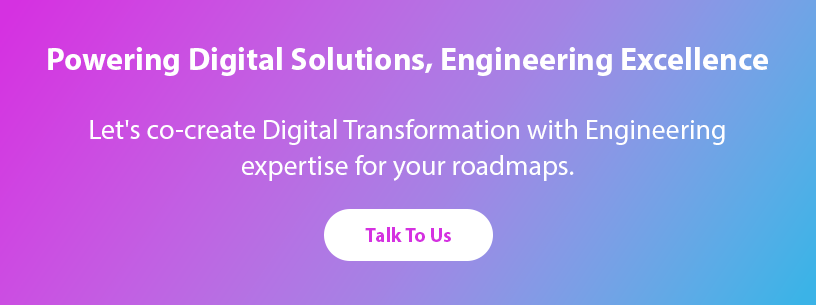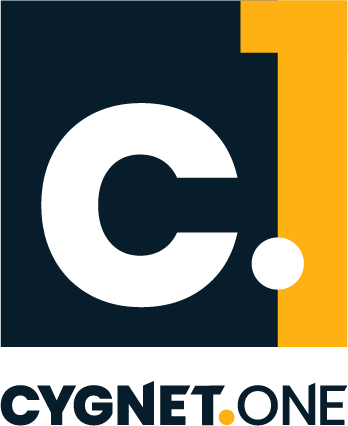Modern organizations face challenges in order to meet the recurrent difficulties of shortening time to market, maximizing returns on R&D expenditures, and expanding into new markets. Another challenge is to develop innovative software products that incorporate cutting-edge technologies such as advanced analytics, AI, ML, big data, cloud computing, and more, while efficiently managing the operational expenses and risks associated with software products.
Software product engineering means utilizing well-defined time-tested techniques to keep up with the constantly changing requirements of the software product life cycle. This can be done by enabling organizations to develop innovative software products while reducing time-to-market and maximizing ROI.
What are software product engineering services?
Software product engineering services can be characterized as an engineering services activity that systematically develops future-ready software products while accelerating time-to-market and maximizing return on investment.
Innovation, development, testing, and deployment are all aspects of these services. Current software product engineering service processes are designed to accomplish the following goals:
- Benefit users with new and improved features that enhances their overall interaction
- Increase versatility and scalability for software products
- Expedite market entry
The responsibility of managing the entire software product life cycle, from the conception of an idea to feasibility studies, design, and production, falls into the realm of software product engineering services.
Software product engineering focuses on converting an idea into a commercially viable product that aligns with the need of a modern user.
Why do modern organizations prefer software product engineering services?
1. Enables early testing of the product idea
The PES team test the software product idea with actual users to check whether the product can solve the stated problems. It is the responsibility of the PES team to gain detailed insights into the possible return on investment from a client and optimize infrastructure and frameworks to meet the needs of consumers. The PES team develops an MVP (Minimum Viable Product) that enables organizations to get real-time end-user feedback and accelerate the product launch.
2. Build a concrete software product strategy
The PES team developed a product roadmap that objectively defines the efforts and timeline required to develop the software product. The PES team define the list of ideas, feature request, reports, and technical requirements into one framework, with such frameworks, it is possible to keep everything in sync from the outset of a project, reducing development time and streamlining operational upgrades.
3. Be an underpin
Effective software product engineering services assist in the development of the project’s architecture but also aid in crafting all the requirement-related data, which includes everything from support timings to team structure to technology stack to budgetary concerns and everything in between. This assists key decision-makers such as the CTO, CIO, and VP of technology in materializing human efforts and project concerns in achieving the result successfully.
What role does a software product engineering service provider play?
Organizations are looking to develop an agile software product that works as a smart and connected ecosystem while maximizing return on investment.
A software product engineering service provider follows a step-by-step methodology to develop a user-centric software product that meets the business requirements and is cost-effective and has state-of-the-art technological traits.
This is where the need for understanding the many phases of software product engineering services becomes increasingly essential as time goes on, so let’s look at the software product design lifecycle as it pertains to today’s market.
1. Discovery – from concept to market
When a product engineering team is in the conceptualization phase, they are focused on separating the project needs and specifications and conceptualizing an idea along with its documentation. The concept is further validated, and it is examined whether it can be modelled into a specific shape. The PES team will check whether the product idea is currently viable and profitable for the firm by creating an MVP, using the market and customer knowledge, the PES team can confirm some ideas and reject those that are not worth the time and money invested.
While developing the product roadmap and strategy, the primary needs and specifications are defined, and the PES team develops a plan for the subsequent steps to be taken. It is also critical that a concept is protected, whether through a patent or another method.
As market dynamics and client preferences change regularly, the product engineer can integrate innovations into older solutions. This comprises assessing product gaps, integrating the product into the new market context, and incorporating innovative technologies as a part of this process.
2. Digital reinvention & modernization
Organizations’ needs and the market environment change regularly, necessitating periodic product modifications to meet ever-changing customer requirements. This entire life cycle thus incorporates innovation and upgrades as fundamental components of product creation, enabling organizations to provide users with unrivalled user encounters.
At this stage, the PES team can also incorporate smart technologies like AI that enables the business system to learn from data and automate everyday business task and make data-driven decisions quickly.
3. Analysis of software lifecycle
In this phase, an analysis is done for the architecture and technologies that need to be used. This phase also consists of several procedures that assist firms in providing continual customer satisfaction. Keeping up with market developments, for example, may entail releasing updates and patches. Customer service is another essential aspect of product lifecycle management.
Providing excellent customer service automatically increases client loyalty and creates opportunities for repeat business interactions. It even incorporates obsolescence management to ensure that firms never lose customers again.
4. Build concrete product idea
This is the phase where the PES team turns the product idea into reality. Here, they pay close attention to all the necessary features to be incorporated in the software product. The PES team is responsible for deploying software products (possibly into multiple deliverables) that the final output is exactly what was intended.
5. Branding and customer journey
The design phase begins with the development of a workable concept. Following the validation of the idea, the next step is to start working on the software product design. The PES team drives this stage of software product development by selecting the most appropriate technologies, software platforms, processors, interfaces, and other elements.
The design phase is concerned with producing a simple user interface. User interface (UI) and user experience (UX) designers are critical in designing seamless interfaces and navigability that engages customers. The product design is put to the ultimate test in the next step: Software product development engineering.
6. Quality assurance (SQA)
When a software product has been developed to completion, it is subjected to strict quality control checks to verify that it is free of errors and faults. All entrepreneurs require a completely faultless product. Testing the product assures that it is faultless before it is launched onto the market for purchase.
The product engineering team uses the most up-to-date automated testing tools and techniques to comprehensively inspect and test the product, considering every potential parameter and test case. Effective testing is required to evaluate the product and identify and correct any faults before it is officially introduced.
7. Iterative increments
Once the product has been released, the PES team continually examines, adds, modifies, or updates it as per the current market demands. Here, the continuous product feature releases are done based on the fundamental structure that has been defined in the digital transformation phase.
With a targeted, agile product development methodology, the PES team handles the complete product lifecycle development process without sacrificing quality from idea to deployment.
Software product engineering – A boon to modern organizations
Software product engineering services contribute to the reduction of this risk. In terms of features and functions, software product engineering solutions may help turn the company around quickly.
Aside from saving money and time, future-driving technology eliminates the need of hiring a skilled team to design a software system from scratch. By facilitating the hosting of third-party platforms and operating systems with system interoperability, it provides comfort and flexibility throughout company operations.
Enables a company to quickly adopt advanced technologies and achieve digital transformation through a holistic approach is a special trait of software product engineering services.
The PES team assists entrepreneurs/CXOs/VP of Technology or any key decision-makers in staying comprehensively up to date with the most recent trends and technological developments. With a skilled IT services company handling these services, the key decision-makers can concentrate on business strategy and provide their customers with the best high-tech products at competitive costs.
Software product engineering works in close collaboration with analytical services, assisting in developing a technical product tailored to the organizations’ needs and target consumers. The software product engineering service provider ensures that whatever solution they are building, whether an enterprise or a technologically complex mobile application, guarantees that the end outcome is optimal resource planning software and meets the consumer’s needs.
Conclusion
Successfully launching and maintaining an excellent software product involves extensive knowledge of the product development process as well as the market and user objectives and demands. Software product engineering services assist modern organizations with all these areas and provide a professional opinion. They also increase efficiency and play a critical part in raising the return on investment (ROI), lowering costs, and increasing output.
These services have become a vital instrument in growing the client base and obtaining additional user knowledge to formulate profit-oriented initiatives. Businesses may usher in a new era of growth and wealth by utilizing such digital product creation services. It is truly the path forward for entrepreneurs who can continue to produce the best outcomes even in challenging economic circumstances.
Cygnet Infotech’s product engineering services are powered with strong expertise in different technologies and platforms, modern product design, development practices, and quality assurance benchmarks for an array of software requirements that help in reducing investment and turnaround time.
Let Cygnet Digital be your technology partner in growth and innovation. Reach out to us today!











